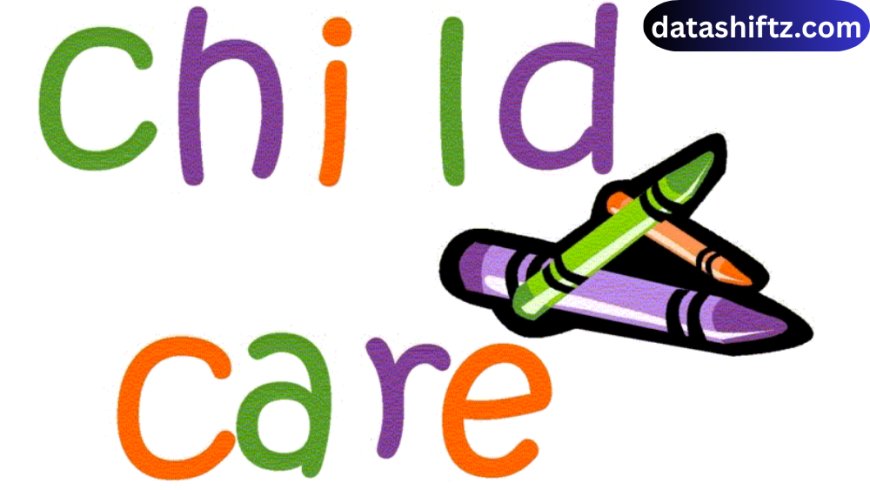Child Care: Building a Strong Foundation for Our Future

Introduction
Child care is a critical component of family life and societal development. It encompasses the supervision, education, and nurturing of children from infancy through early adolescence. High-quality child care provides not only a safe environment but also fosters cognitive, emotional, and social growth. In today’s fast-paced world, understanding the importance of child care, the different types available, and the best practices for selecting and supporting providers is essential for parents, educators, and policymakers.
Understanding Child Care
What Is Child Care?
Child care refers to the professional or informal care of children outside of the home. It can take place in various settings, including family homes, daycare centers, preschools, or through in-home nannies. Quality child care is more than supervision—it incorporates early learning, socialization, and emotional support.
Benefits of High-Quality Child Care
-
Cognitive Development – Early exposure to structured learning promotes language, problem-solving, and critical thinking skills.
-
Social Skills – Interacting with peers helps children develop cooperation, sharing, and empathy.
-
Emotional Security – Consistent and nurturing care fosters a sense of safety and confidence.
-
School Readiness – Children in quality programs often perform better academically in elementary school.
-
Support for Working Parents – Reliable child care enables parents to pursue careers and maintain work-life balance.
Types of Child Care Options
Understanding the different forms of child care can help families choose what best fits their needs and values.
1. Family Child Care Homes
These are small-scale operations often run from a provider's home. They offer a homelike environment and usually cater to a limited number of children, allowing for individualized attention.
2. Center-Based Care
Daycare centers and preschools provide structured schedules, certified educators, and curricula designed to support early learning. Centers often have age-specific classrooms and social activities to promote peer interaction.
3. In-Home Care
Hiring a nanny or au pair provides personalized care within the child’s home. This can be ideal for parents seeking flexible schedules or specialized attention for children with unique needs.
4. Informal Care
Care provided by relatives, friends, or neighbors. While cost-effective, informal care may lack structured learning activities and regulatory oversight.
Selecting the Right Child Care Provider
Choosing the right child care environment is a critical decision. Parents should consider the following factors:
Safety and Health
-
Verify licenses and certifications.
-
Inspect facilities for safety hazards.
-
Ensure adherence to hygiene standards and vaccination requirements.
Curriculum and Learning
-
Look for programs emphasizing cognitive, social, and emotional development.
-
Ask about daily activities and learning goals.
-
Consider alignment with your child’s learning style and needs.
Staff Qualifications
-
Experienced, trained, and passionate caregivers make a significant difference.
-
Low child-to-caregiver ratios ensure personalized attention.
Cost and Accessibility
-
Balance affordability with quality.
-
Consider proximity to home or work for convenience.
Family Involvement
-
Opportunities for parents to participate or receive updates about their child’s progress.
Comparison of Child Care Types
| Type of Care | Age Range | Typical Setting | Benefits | Drawbacks |
|---|---|---|---|---|
| Family Child Care | Infants–5 yrs | Provider's home | Homelike, individualized attention | Limited peer interaction |
| Center-Based Care | 6 wks–5 yrs+ | Daycare/preschool | Structured learning, socialization | Can be costly, larger groups |
| In-Home Care | Infants–12 yrs | Child's home | Personalized, flexible schedule | High cost, less socialization |
| Informal Care | Varies | Relative/friend’s home | Affordable, convenient | Less structured, unregulated |
Tips for Parents to Enhance Child Care Experience
-
Visit Multiple Facilities – Observe interactions and environment before deciding.
-
Check References and Reviews – Speak to other parents and read online feedback.
-
Communicate Regularly – Stay updated on your child’s progress and concerns.
-
Encourage Social Interaction – Participate in activities that promote friendships.
-
Support Emotional Development – Reinforce lessons and routines learned at the center.
-
Stay Involved – Attend events, parent-teacher meetings, and workshops.
-
Advocate for Quality Standards – Support local policies that enhance child care quality.
-
Balance Work and Family Life – Schedule time to bond and engage with your child.
-
Foster Lifelong Learning – Encourage curiosity and reading at home.
-
Prioritize Consistency – Maintain routines and schedules for security and stability.
Conclusion
Child care is more than a service; it is an essential building block for the next generation. High-quality child care nurtures cognitive, social, and emotional development, while also supporting parents in maintaining careers and family balance. By understanding the types of care available, evaluating providers carefully, and staying involved in a child’s early education, families can make informed choices that set the stage for lifelong growth and success.
Investing in child care is an investment in the future, ensuring that children not only thrive today but also develop the skills and confidence necessary to become tomorrow’s leaders, innovators, and compassionate citizens.






























